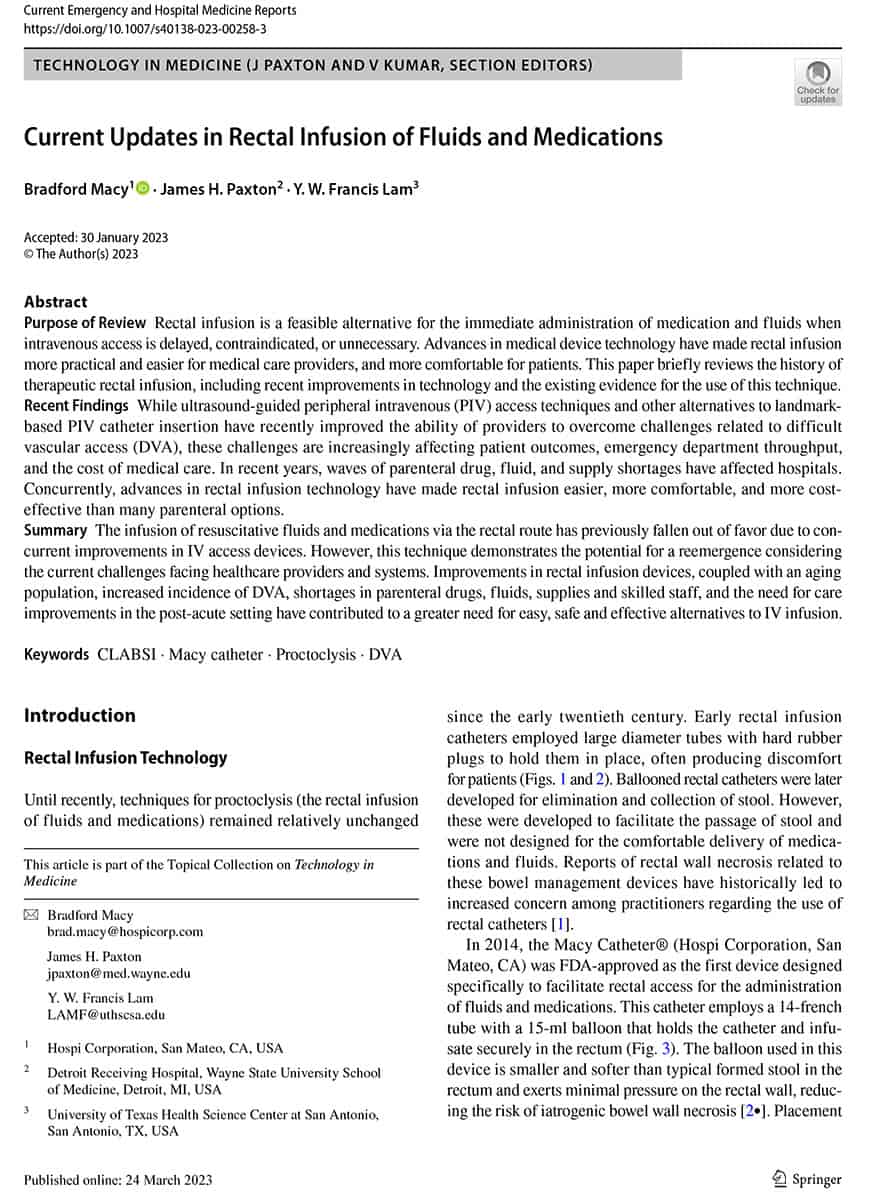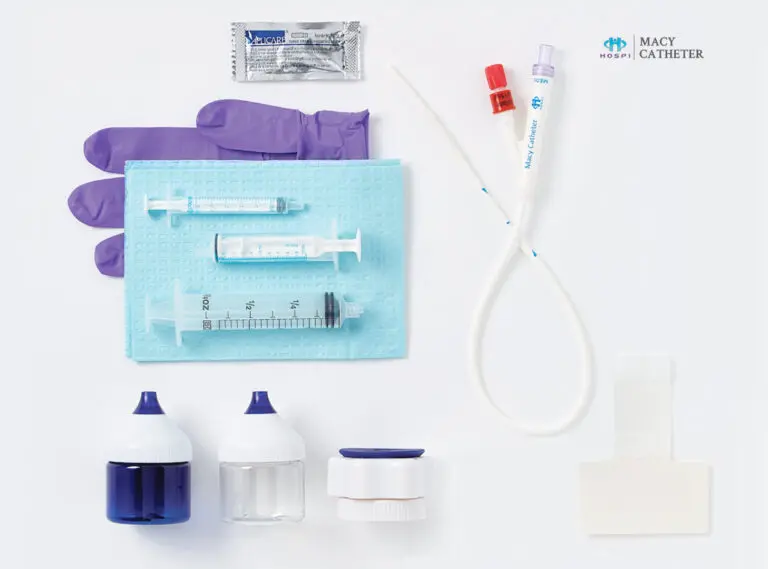I will never go back to my prior practice and will continue using the Macy Catheter.
Based on my experience on our hospice inpatient unit, the Macy Catheter is faster than subcutaneous in controlling pain with opioids and I am able to control pain with less opioid dose adjustments. It is also very effective in most instances in quickly controlling terminal agitation and other symptoms. It saves nursing time and decreases medication cost and waste.
Dr. Wendy Schmitz, MD
Vice President of Medical Care – Ohio’s Hospice
The Macy Catheter: An Alternative Route that Works
This 3-minute clip summarizes how Ohio’s Hospice at Dayton implemented the Macy Catheter and the reasons why the agency ultimately decided to adopt the device as a standard of practice.
Why choose the Macy Catheter?
Medication and fluid administration is easy, quick, and comfortable for the patient.

It’s effective.
The catheter facilitates rapid symptom control. Patients experience relief 10-15 minutes after administration.

It’s comfortable and dignified.
The catheter is small and soft. It’s accessed at the patient’s thigh or abdomen after the initial, painless insertion.

It’s simple.
The catheter makes it easy to administer medications already at the bedside.

Patented and FDA-cleared to provide rectal access for administration of medications and fluids

Safer and more comfortable method of medication administration than other options like IV and SubQ

Easy set-up, maintenance, and drug disposal

Discreet (After the initial insertion, which is painless, the catheter is accessed at the patient’s thigh or abdomen)

Caregivers/loved ones can administer medications and reinsert if necessary

Non sterile placement; can be placed by any licensed clinician
The Macy Catheter should be used when oral or sublingual medications do not quickly control a patient’s symptoms.
If a patient loses the oral route, mild or moderate symptoms can often be managed with the sublingual route. However, if the medication volume is too much for effective sublingual absorption or if the patient has heavy secretions, then the Macy Catheter is a logical alternative.
The Macy Catheter allows for immediate utilization of oral medications already in the home or at the bedside. Because the medications that all hospices use as the patient begins to decline (ex. comfort kits) are immediate-release, the Macy Catheter can be used to administer them with no lag time in symptom relief onset.
Symptoms may include:










